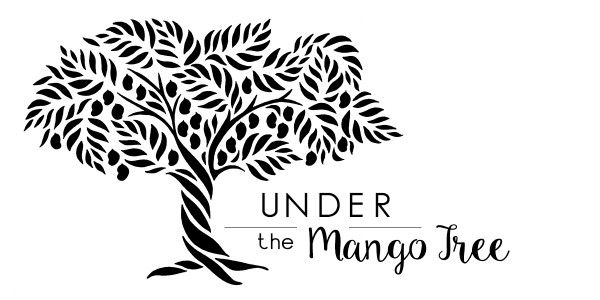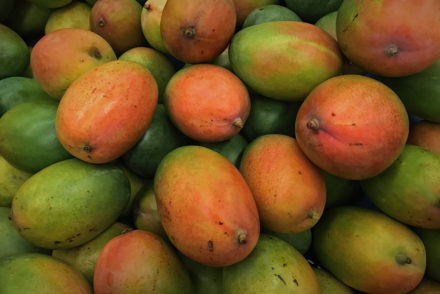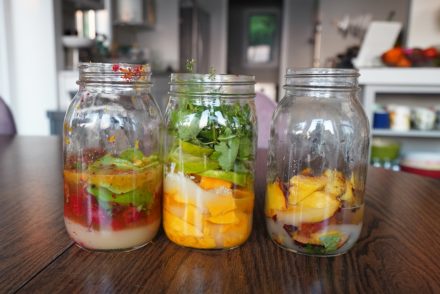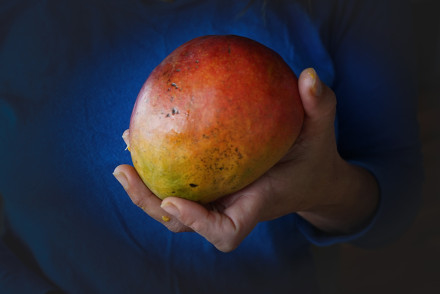#MuchosMangoes inspire as I sail down the Nile
Egypt has long been on my list of places to visit and recently I was lucky enough to spend fifteen days traveling around the country. Not just to see and feel the ancient history but to experience the rich culture and food that I have grown to love with so many of my travels to the middle east for agricultural work.
On this trip I was lucky enough to see almost all parts of Egypt, from Cairo all the way to the southern border near Sudan. I of course got to see the great pyramids in Giza and ride a camel, and visit the tombs and temples of Pharaohs, queens and goddess’. I also got to sail down the Nile for four days – I guess technically I sailed up since the Nile, the longest river in the world, flows from south to North. I met with women in small villages and got to eat some wonderful food in a Nubian village near Sudan and cook with the chef on the ancient Egyptian sailboat. lI earned a lot about Egypt; the greatest take away is how much and how long the country (its people) have been suffering and how little we westerners hear about that and how important mangoes are there.
 Egypt’s economy was built on tourism and a significant number of people rely on the travel and tourism sector to survive. For over a decade now that sector has struggled significantly. According to the United Nations World Tourism Organization the number of tourists has fallen from 14 million to around 5 million. The 2011 revolution, airline disasters, political turmoil and deadly bombings had led the worlds tourists to consider Egypt unsafe for many years and even though there had been recent signs of the tourism hardship turning a corner, the pandemic swept through Egypt brutally as it did in most places. The current Russian Ukrainian war has made a great many things excruciatingly more difficult for ordinary Egyptians in terms of the basics- eating the most obvious.
Egypt’s economy was built on tourism and a significant number of people rely on the travel and tourism sector to survive. For over a decade now that sector has struggled significantly. According to the United Nations World Tourism Organization the number of tourists has fallen from 14 million to around 5 million. The 2011 revolution, airline disasters, political turmoil and deadly bombings had led the worlds tourists to consider Egypt unsafe for many years and even though there had been recent signs of the tourism hardship turning a corner, the pandemic swept through Egypt brutally as it did in most places. The current Russian Ukrainian war has made a great many things excruciatingly more difficult for ordinary Egyptians in terms of the basics- eating the most obvious.
But Egyptians, some of the friendliest people I have ever met, are doing what they can to survive, something I hadn’t really been aware of, which is why I like traveling to places I don’t know, I like the learning aspect. And with all my learnings in Egypt I was pleased to learn that mangoes are one of Egypt’s top agricultural products, especially domestically. I saw mangoes everywhere while in Egypt and it surprised and delighted me.
Egypt is about tenth in the world in terms of mango exports, which is big, but the amount of small-scale domestic mango production is tremendous and I got to be immersed in it as I sailed down the Nile. There is often not enough information on these sorts of small-scale domestic production systems. I am deeply fascinated with domestic agriculture so I felt lucky to have the rare opportunity to be inside it.
The first thing I noticed is how big and mature the trees are, I had guessed (based on my experience in Mexico, Ecuador and Peru) most of the trees were around 30 years old but many of the villagers told me most were between 40 and 60 years old, with a good scattering of new plantings all throughout the older orchards.
The Seasonal Details
The season runs from June and moves through the end of October with the majority of crops growing in the regions with less humidity in the north like Ismailia where over 80% of the mango crop is grown, especially those that are exported. A significant number of domestic production orchards run along the entire Nile delta, which also has lower humidity. That area spans all the way down to Aswan, where the dam is located.
Some of the villagers told me that there over two hundred different varietals growing in Egypt and even though I cannot confirm that number, because most resources for the export market point to 15-20 varietals, I tend to believe the villagers, as most who I had visited had over 30 in their small plots.
Of the main varietals found throughout Egypt the most popular varietal is the Ewais/Owais/Awees- it’s a medium sized mango and exceptionally sweet. I can’t seem to get clear names, as the Arabic English translation was/is a little iffy. The zebda/zebdya/zebdea is another popular varietal that is extremely juicy with creamy fiberless texture. Its sweet nectar is used to make fresh mango juice throughout the country and mango juice is by far the most popular beverage year-round in Egypt. It makes me wonder why we are not making more mango juice with the production in Mexico? Other notable varietals grown are the Tymor, Alfonso, Sukarya and the Keitt. A good portion of the mangoes in Egypt are on the large size in comparison to our imports in the USA.
The history of the Egyptian mango
Mangoes first landed in Egypt about 200 years ago thanks to Mohamed Ali Pasha. On one of his journeys into Sri Lank he returned with mango trees and planted them in the Shubra Palace, which was his palace in Cairo and now home to the Mohamed Ali Basha Museum with house an agricultural school, I was told. Most of the early mango trees were planted throughout Egypt in palaces, eventually they made their way into the hands of the regular folks and local and commercial agriculture.
The majority of the mango exports flow into other nearby Arab countries like Saudi Arabia, Libya, United Arab Emirates, Kuwait and some European countries. Most of Egypt’s mangoes are kept for the domestic market and as far as I understand the government keeps strong policies on export so that the domestic production remains the focus.
The Local Market & My Crate Maker
The most joy I experienced on the trip (#MangoJoy technically) was when I met Mohammed the mango crate maker. Mohammed did let me know that the plastic crates we use in Mexico are not good for the fruit, nor are the cardboard boxes we transport them to retailers in . According to Mohammed, my crate maker, it’s the date palm reed that are the best for keeping the mangoes nice. This is what he makes his mango crates from and a large portion of the mangoes from the Nile Delta get transported in this crates, crates that have been made the same way since the Ancient Egyptian days.
Mohammed lives in Fayes, a village in Aswan on the Nile. He’s 62 years old and has been making crates for 50 years. He says he will do this until he’s at least 80, that it will keep his mind sharp and active. He makes mango crates for the local market, meaning his crates get made at his little shop (which is just a small plot in a field with a small covered area), and then filled with local mangoes to get sent all over the country.
Each mango crate holds around 27 kilos (I’m not totally certain of this, they look too small to hold that much – but that was the info I was given). The reeds come from Esna just down the river. He buys about 1000 reeds at a time and pays about 2500 Egyptian Pounds. It takes 3 reeds to make a crate and he sells the crates for between 18-20 EGP. (His cost is about 17 Egyptian pounds and he sells them for about 18-20 EGP to the local farmers, who preorder their needs before the season. This particular village, where Mohammed makes his crates, grows about a million kilos of mangoes per season.
He makes about 3000-4000 crates per season and the crates go on to get reused multiple times throughout the country for various other tasks, they typically last around a year of continued use. I of course got to make a crate and I am a little giddy thinking about my crate being used for the mango industry in Egypt! But watching him work, making the crates makes me feel happy.
SERIOUSLY, CLICK HERE TO SEE HIM IN ACTION!
Climate Change – Its Global
Like all mango producers these days Egypt’s mango growers are facing a great deal of problems that come with climate change. They have suffered continuously rising heats that has proven difficult for the mango seasons. The rising temperatures have given way many mold and other diseases. In the main mango region of Ismailia is said that over 70% of the 2021 production was lost to black mold.
Producers have since been trying new techniques to combat the problems. Everything from putting greenhouse like structures over the younger trees to control humidity to brining in new varietals that are more heat tolerant.
Considering the most of the population of Ismailia around 15 million) is involved in the mango production and trade this has become a serious issue for the region most associated with mangoes.
The temperatures have been so high the last several seasons that most of the fruit is destroyed before it even gets a chance to near the ripening phase. According to Al- Monitor – many farmers have been left with less than 5% of their usual crops.
This will be a serious problem to watch for Egypt and mangoes and one that can’t be easy considering the general and serious political and economic issues.
Using the Tree
Since the domestic market is so strong and made up of lots of little orchards in small villages, operated by small traditional farmers, there is a strong use of the entire tree that I witnessed which I found really refreshing. Old trees and pruned branches are often made into basic furniture. The oil is extracted from the pit (kernel in the pit) and the gum extracted from the bark. Many traditional medicines are made from the bark and leaves as well. Gigantic mango trees speckle the villages offering cool shade in the midst of severe heat.
Culinary Growth
For years now, the mango fruit has grown in popularity and importance not just agriculturally but also culinarily. Like our country, the people are still learning to use it. And more and more the mango is making its way into culinary experimentation. You see this in particular during Ramadan, I was told, where more and more traditional desserts are incorporating mangoes. Knafeh with mangoes and mango mahalabiya are an example of this. New mango festivals are popping up around the country featuring the culinary delights of mangoes In general its hard to be in Egypt and not feel the importance of mangoes- this is slipping into the kitchens more and more.
My Egyptian Mango Creation
I couldn’t help but feel inspired myself upon return, not just in terms of the culinary delights that inspired me but the hard work they put into their mango industry. On the food side, I was deeply moved to use some of the spices I brought home: rose petals, cardamon and cinnamon.
I saw the recipe I used to adapt the recipe I created in the New York Times just a few days after I returned from Egypt. I love mango short bread cookies and so I immediately thought I’d try and make a version of this Orange Pistachio and Chocolate Shortbread recipe, not just utilizing mangoes, but Egyptian and Middle Eastern Influences and flavors, I’m happy with the results and the time with Egypt’s mangoes!
Mango, Rose & Pistachio Shortbread
Makes about 20-25 cookies
For this recipe I chose to make my mango puree using half and half. I thought it would give an even buttery essence to the cookies. I blended 1/3 cup of mango cubes with a few tablespoons of half and half, making a thick puree.
Ingredients
3 cups flour
1 teaspoon salt
1 tablespoon dried rose petals
1 cup butter (2 sticks), room temp
½ cup sugar
½ teaspoon vanilla
2 egg yolks
½ cup thick mango puree
2 tablespoons orange zest
½ cup roughly chopped pistachios
4 ounces bittersweet dark chocolate, roughly chopped
Directions
Whisk together the flour, salt and rose petals.
Cream together (using a hand mixer or stand mixer) the butter, sugar and vanilla until its smooth and creamy, about 1 ½ minutes. Add the egg yolks, mango puree and orange zest and mix another 20-30 seconds until mixed well.
Add the flour mixture a little at a time, mixing on low or by hand, making sure to incorporate all the flour into the butter mango mixture until its well mixed. Gently mix in the pistachios and chocolate by hand. The dough will be very crumbly.
Place the cookie dough in 9 x 13-inch glass baking dish and flatten and compact evenly. Chill in the refrigerator for about 4 hours or the freezer for about 1.
Preheat the oven to 350 F.
Line a baking sheet with parchment paper. Cut the chilled dough in squares or rectangles (cookie shape) and gently remove them carefully so they don’t break and place them on the lined baking sheets with room in-between ( you may need 2 sheet trays).
Bake until the edges of the cookies are golden about 15 minutes. Let the cookies cool completely before serving.


















No Comments